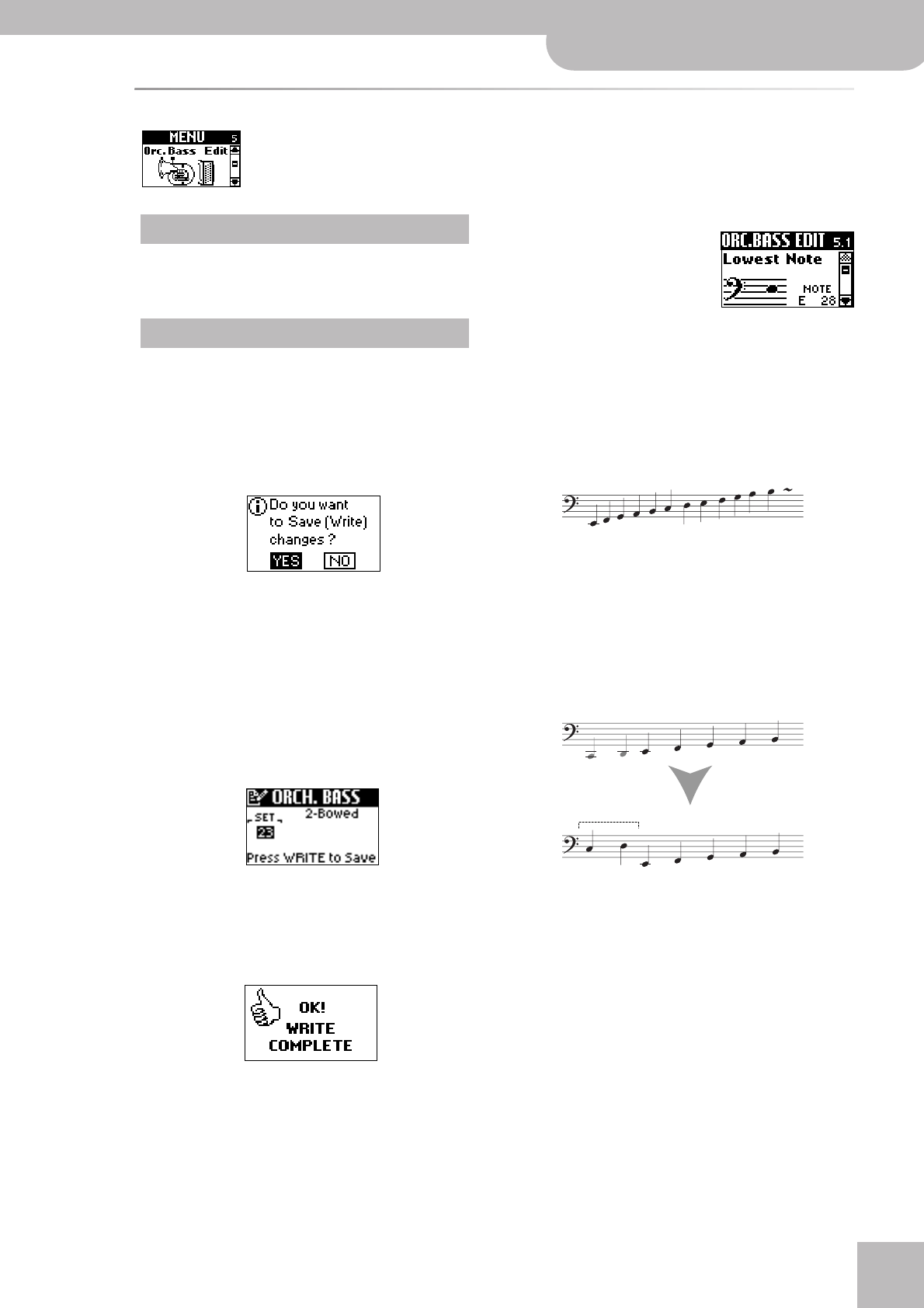
ORC.BASS EDIT parameters
V-Accordion
r
51
ORC.BASS EDIT parameters
The parameters of the ORC.BASS EDIT group allow you to edit the Orchestra Bass section. See page 27
for details about the Orchestra Bass section. See pages 35 and 37 for how to select and adjust the
parameters.
Press [UP] and [DOWN] simultaneously to select the value that is indicated as “Default setting”.
The selection of Orchestra Bass sounds can be auto-
mated on the “2.12 Bass Link” page (page 42) – for each
Treble register.
Any changes you make can be saved even without
using the WRITE function (see p. 77). To avoid losing
your changes, it would be a good idea to take advan-
tage of the following automatic routine.
Whenever you press [EXIT÷JUMP] after editing a Menu
parameter, the FR-7/FR-5 asks you whether you want
to save your changes:
“YES” is selected by default. If you want to save your
changes, proceed as described below. (If you don’t, turn
the [DATA÷ENTER] knob to select “NO”, then press the
[DATA÷ENTER] knob.)
Note: You can save your changes later using the WRITE function
(see p. 77). But be sure to do so before selecting another Set –
and before switching the FR-7/FR-5 off.
To save your changes:
(1) Press the [DATA÷ENTER] knob. The display now
responds with:
(2) If necessary, select another Set than the one you
are currently using.
(3) Press the [WRITE] button to save your changes. The
display now briefly confirms that your settings
have been stored:
Note: Do not switch off the FR-7/FR-5 or select another Set
before saving settings you want to keep: save them first.
5.1 Lowest Note
This parameter allows you to
specify the lowest note the
selected sound can play. If you
have ever worked with a Roland
arranger module, you may be
familiar with the term “Wrap”. That is precisely what
this parameter does.
The Orchestra Bass sounds (like the Orchestra sounds of
the Treble section) are PCM waveforms (samples) of
acoustic instruments. Each acoustic instrument has a
set range: it cannot sound notes below or above that
range. A normally tuned 4-string bass guitar allows you
to play a low E, but not the D below it, for instance:
Samples (PCM waveforms), on the other hand, can
lower the pitch of a recorded sound almost indefinitely.
But that doesn’t sound very natural. The “Lowest Note”
parameter allows you to specify the lowest pitch the
sample can use. If you nevertheless play a lower note
on the button keyboard, it will be sounded one octave
above the corresponding pitch – and sound natural.
Here is an example:
The Orchestra Bass sound therefore sometimes changes
octaves. For some songs, the default setting (E 28) may
yield odd results, especially if you need to play walking
bass lines, etc. In that case, you can change the “Lowest
Note” setting to achieve a satisfactory result.
The options are: E 28, F 29, F# 30, G 31, Ab 32, A 33,
Bb 34, B 35, C 36; Default setting: E 28. (The figures
refer to the MIDI note numbers – each MIDI note has its
own “address”.)
Important note
Saving your changes
Lowest Note= E (28)
If this is what you play on the button keyboard…
…after choosing…
…these notes are transposed 1 octave up.


















